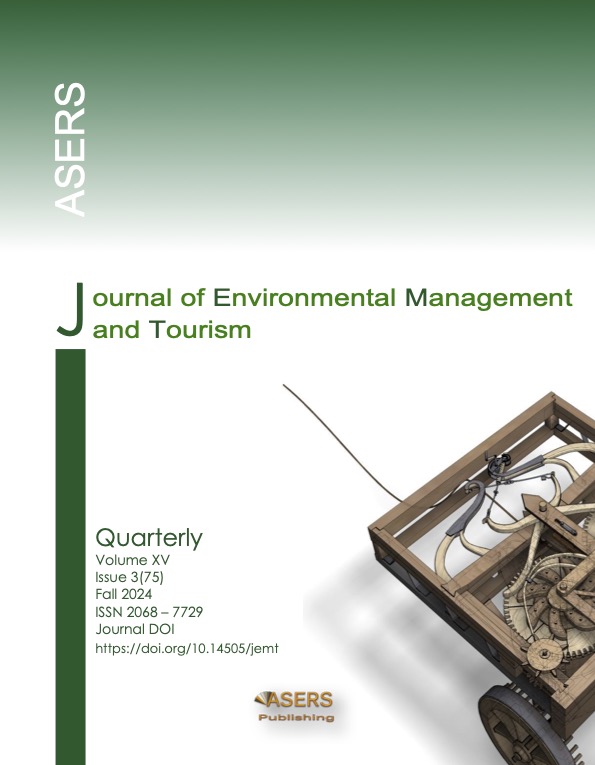Food Security and Marine Capture Fisheries of BUGSAY Association of La Libertad, Negros Oriental, Philippines
Abstract
Marine Capture Fisheries are a valuable food source, but challenges related to humanitarian and environmental factors often hinder access to sufficient nutrition. This study aimed to evaluate food security and analyze marine capture fisheries practices among members of the BUGSAY Association in La Libertad, Negros Oriental. Employing a stratified random sampling method, the researcher gathered data from 254 respondents from six coastal barangays in La Libertad - Pisong, Martilo, North Poblacion, South Poblacion, Cantupa, and San Jose. The majority of respondents, predominantly male fishermen aged 46-60, were married with 1-5 dependents, had incomplete elementary education, and earned less than ₱9,520 monthly. Findings revealed prevalent challenges in accessing adequate and nutritious foods, with many respondents experiencing these hardships ten times or more in the past four weeks. The study highlighted May as the peak fishing month, with 144 respondents engaging in high fishing activity, followed by June (129 respondents) and April (123 respondents). The ranking indicated heightened fishing activities in the first half of the year (April, May, June), coinciding with the spawning season of many fish species in the Philippines during late spring and early summer. This period witnesses increased fish abundance, driven by rising water temperatures that enhance fish activity and accessibility to fishermen. Warmer waters also promote plankton growth, a crucial food source for fish (Mcevoy, L., and Mcevoy, J., 2006). In contrast, February exhibited the lowest fishing activity, with only 34 respondents identifying it as a peak fishing period. February falls within the Amihan season, characterized by cooler temperatures, strong winds, and rough seas - conditions that pose risks and challenges for fishing endeavors. The use of cast nets, pump boats, and traditional fishing vessels is tailored to local environments and cultural norms, enabling fishermen to efficiently catch and sell fresh fish during peak fishing months (Xing, Q., Yu, H., and Wang, H., 2024).
References
[2] Calumpong, H.P., J.S. Estacion, M.V. Lepiten and C.E. Acedo. 1997. Status of the Coastal Resources of the Negros Learning Site (Manjuyod to Dauin). Silliman University Marine Laboratory and the Center of Excellence on Coastal Resources Management, Silliman University, Dumaguete City, Philippines, p. 196
[3] Carthy, U. M., et al. 2018. Global food security – Issues, challenges and technological solutions. Trends in Food Science and Technology, 77: 11–20. DOI: https://doi.org/10.1016/j.tifs.2018.05.002
[4] FAO. 2011. Review of the state of world marine fishery resources. FAO Fisheries and Aquaculture Technical Paper No. 569. Rome. www.fao.org/3/i2389e/i2389e.pdf, ISBN 978-92-5-107023-9
[5] Garcia, S. M., and Rosenberg, A. A. 2010. Food security and marine capture fisheries: characteristics, trends, drivers and future perspectives. Philosophical Transactions - Royal Society. Biological Sciences, 365(1554): 2869–2880. DOI: https://doi.org/10.1098/rstb.2010.0171
[6] Jesintha, N., and Madhavi, K.R. 2020. Marine capture fisheries: Sustainability issues. International Journal of Fisheries and Aquatic Studies, 8: 34-37.
[7] Kwen, K. I., Davies, O. A., and Binyotubo, T. E. 2013. Survey of fishing gear and status of fishers in Igbedi Creek, Nigeria Delta, Nigeria. International Journal of Scientific Research in Knowledge, 1(11): 493–501. DOI:https://doi.org/10.12983/ijsrk-2013-p493-501
[8] Lamarca, N. S. (2018, June 26). Fisheries Country Profile: Philippines. SEAFDEC.
[9] Loring, P. A., et al. 2019. Fish and Food Security in Small-Scale Fisheries. In MARE publication series (pp. 55–73). Springer International Publishing. DOI: https://doi.org/10.1007/978- 3-319-94938-34
[10] McEvoy, L. A., and McEvoy, J. 1992. Multiple spawning in several commercial fish species and its consequences for fisheries management, cultivation and experimentation. Journal of Fish Biology, 41(sB): 125–136. DOI: https://doi.org/10.1111/j.1095-8649.1992.tb03874.x
[11] Xing, Q., Yu, H., and Wang, H. 2024. Global mapping and evolution of persistent fronts in Large Marine Ecosystems over the past 40 years. Nature Communications, 15(1). DOI: https://doi.org/10.1038/s41467-024-48566-w
Copyright© 2025 The Author(s). Published by ASERS Publishing 2025. This is an open access article distributed under the terms of CC-BY 4.0 license.
